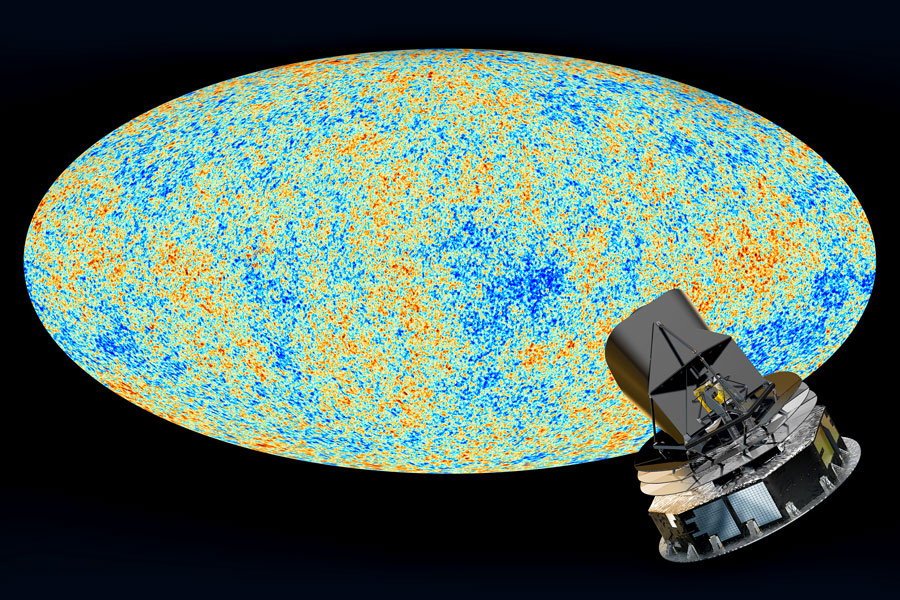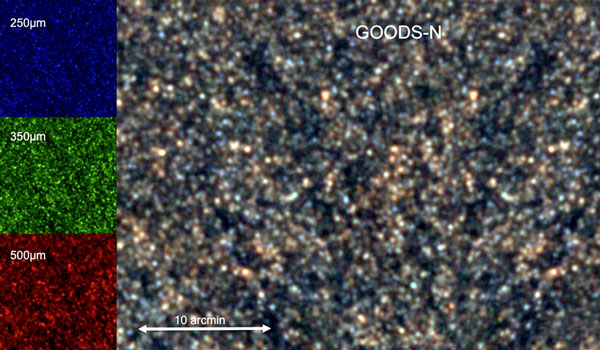Above:
MDL’s High-Frequency Instrument enabled Planck to image the sky in unprecedented detail. In March of 2013 Planck delivered its first all-sky image of the CMB. As the most precise picture of the early universe in existence, it has revealed subtle anomalies that may challenge the foundations of cosmology.
Herschel & Planck
Enabling ESA to Map the Cosmic Microwave Background
Cliff Frez - Krikor Megerian - Lorenzo Minutolo - Roger O’Brient - Anthony Turner - Alexis Weber
The European Space Agency (ESA) Herschel and Planck missions were launched in 2009 and have provided numerous discoveries to the science community. MDL devices for these missions have made significant contributions to our knowledge of the universe.
Planck’s High-Frequency Instrument (HFI). Planck was designed to trace the Cosmic Microwave Background (CMB), the faintest relic radiation from the Big Bang. As the oldest light in the universe, the CMB preserves a picture about 380,000 years after the Big Bang. Its study provides information about the conditions that led to our universe today, as well as its continuing evolution. MDL’s High-Frequency Instrument enabled Planck to image the sky in unprecedented detail, and in March 2013, Planck delivered its first all-sky image of the CMB. As the most precise picture of the early universe in existence, it has revealed subtle anomalies that may challenge the foundations of cosmology.
Far-Infrared (HIFI) Heterodyne Instrument for Herschel. HIFI is a very high resolution heterodyne spectrometer. It did not produce pictures of stars and galaxies, but rather extremely detailed spectra of their atoms and molecules. To do so, it relied on MDL’s Schottky and SIS devices. MDL’s Schottky devices were used to generate oscillator signals throughout HIFI’s 0.5 to 2 Terahertz frequency range. HIFI’s highest-frequency SIS detector at 1.2 THz also used MDL devices developed in collaboration with Prof. Jonas Zmuidzinas’ group at Caltech.
Most recently, scientists using HIFI made the first definitive detection of water vapor on the dwarf planet Ceres in the asteroid belt. The results come at the right time for NASA’s Dawn mission. Currently on its way to Ceres and scheduled to arrive in 2015, Dawn will take the closest look ever at its surface.
Spiderweb Bolometers on HFI and SPIRE. Both Planck’s High Frequency Instrument (HFI) and Herschel’s Spectral and Photometric Imaging Receiver (SPIRE) utilized JPL/MDL developed spiderweb bolometers for the studies of anisotropies in the cosmic microwave background radiation. Spiderweb bolometers, which can detect very small amounts of energy and convert them to electrical signals, enabled Planck and the Herschel SPIRE instrument to deliver state-of-the-art maps of the universe at millimeter and far-infrared wavelengths.
While operations of Planck and Herschel ended in 2013, their wealth of data is still in early stages of analysis.
The Planck Team was awarded the
Gruber Cosmology Prize in 2018
For more on Herschel and Planck:
Caltech article on Herschel
JPL article on Herschel
ESA article on Herschel
ESA article on Herschel/Planck
A false-color image of thousands of distant, luminous, unresolved galaxies as seen by SPIRE. Color coding information indicates the temperatures and distances of the galaxies. Image courtesy of ESA/SPIRE Consortium/HerMES Key Programme Consortium.
+ Larger image



